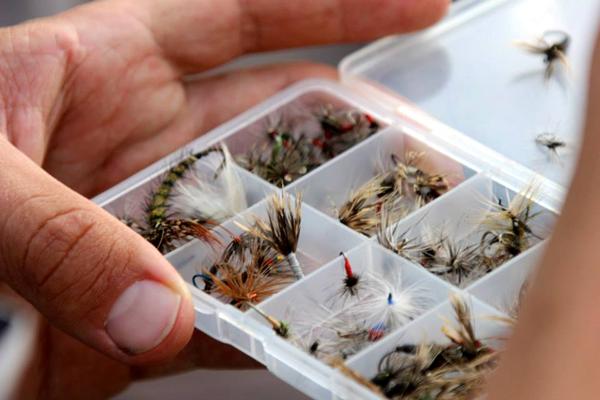By Zoe May
Abstract
Seasonal affective disorder is a type of depression associated with seasonal change, specifically, in the fall and winter seasons. Research has found that the disorder is treatable. Treatments include light therapy, increased melanopsin cells, targeting serotonin in 5-HTT BPND and 5-HT1D, and directed connections treating hypothyroidism and seasonal affective disorder. This paper collects various studies on seasonal affective disorder to challenge the traditional light therapy treatment and propose the use of targeting and increasing naturally occuring hormones present in blood and the brain. There is a promising future for treating seasonal affective disorder and future studies connected to the findings in this research paper is both probable and necessary.
Keywords: seasonal affective disorder, natural hormones, light therapy, melanopsin, 5-HTT BPND, 5-HT1D, serotonin, hypothyroidism
Introduction
Seasonal affective disorder is depression associated with late autumn and winter. Residents of Alaska are often personally affected by seasonal affective disorder or have a general knowledge of the disorder. The current, most common treatment for seasonal affective disorder is light therapy. Light therapy is exposure to daylight or the use of specific wavelengths of light through “polychromatic polarized light, lasers, light-emitting diodes, fluorescent lamps, dichroic lamps, or very bright full spectrum light” in order to stimulate the creation of naturally occurring hormones (Wikipedia, 2020). Light therapy is currently the most common treatment for seasonal affective disorder, but is it effective and is it the best treatment? These questions led to the research question for this paper; can seasonal affective disorder be treated with natural hormones? My initial hypothesis on this research question is that increasing the production of natural hormones will treat the symptoms of seasonal affective disorder. This paper will focus in reviewing literature related to seasonal affective disorder and its treatment by increasing or stimulating naturally occurring hormones.
Light Therapy as Placebo Treatment
Research indicates that light therapy is ineffective and considered a placebo treatment. Wirz-Justice, A. et al. (1999) ran a study on the effectiveness of conventional artificial light therapy against natural light exposure. They tested participants with seasonal affective disorder in two groups. The first group was exposed to 1 hour of natural light and the other group was exposed to artificial light at 0.5 h @ 2800 lux and then asked to self-rate on the Hamilton depression score. The Hamilton depression score resulted in “25% remitted after… artificial light and 50% after [natural light]” (Wirz-Justice, A. et al., 1999). This means that the natural light advanced melatonin secretion and decreased cortisol patterns and the artificial light did not alter melatonin or cortisol patterns. As a result, Wirz-Justice, A. et al. (1999) concludes the artificial light treatments “can be considered mainly placebo and did not improve any of the depression self-ratings, whereas natural light exposure improved all self-ratings” (Wirz-Justice, A. et al., 1999). Since light therapy is essentially deflated, researchers must look to different treatments for seasonal affective disorder. This draws the introduction of using targeted and increased natural hormones.
Melanopsin Gene Variants
Roecklein et al. (2009) conducted research on melanopsin- a possible variant gene in seasonal affective disorder. They tested for an association between alleles, genotypes, and haplotypes of the melanopsin gene in 130 participants who were known to have seasonal affective disorder relative to 90 participants who had no history of any psychopathology. Their research found that participants with seasonal affective disorder had a higher frequency of the melanopsin gene than control participants (Roecklein et al., 2009). Roecklein et al. (2009) concluded that individuals with this gene are 5.6 times more likely to be in the seasonal affective disorder group than the control group. Genes are the code for hormones, hormone receptors, hormone precursors, and molecules needed for hormonal synthesis, transport, and elimination (Brouwer, et al., 2015). This means that genes and, especially, gene variants, such as melanopsin, are the foundational code for natural hormone occurrence. In this study, high melanopsin gene frequency is directly related to participants with seasonal affective disorder. Increasing natural hormones inside melanopsin cells should be eagerly pursued in further studies to create a treatment for seasonal affective disorder in order to balance the natural levels.
5-HTT BPND Levels
Tryer, A. E. et al. (2015) researched the brain activity of 5-HTT BPND, the serotonin transporter, regarding seasonal affective disorder. They administered a questionnaire and paired it with PET and MRI scans targeting the levels of 5-HTT BPND in the “PFC, ACC, thalamus, caudate, putamen, temporal cortex, midbrain, striatum, and hippocampus” (Tryer, A. E. et al., 2015). The sample and control groups were tested randomly at different times during the summer and winter. Tryer, A. E. et al. (2015) concluded that people with seasonal affective disorder display an increase of 5-HTT BPND in all the brain areas, except the hippocampus, during the winter season. This means there is a positive relationship between seasonal change in serotonin levels and the severity of seasonal affective disorder. The components of behavioral phenotypes, specifically anxiety and depression phenotypes, are most likely associated with seasonal affective disorder causing reduced serotonin levels (Albert, Paul R., V.-A., & Christine., 2014). In this study, low levels of the natural hormone, serotonin, indicates it is possible to increase its levels in order to treat seasonal affective disorder; further research concerning this should be pursued.
5-HT1D Receptor Against Sumatriptan
On the topic of serotonin, Yatham, L. N., Lam, R. W., & Zis, A. P. (1997) details the research procedures and findings of the connection between seasonal affective disorder and growth hormone responses to a 5-HT1D receptor against sumatriptan, a serotonin-agonist drug. Individuals diagnosed with seasonal affective disorder and a control group of individuals without seasonal affective disorder were treated with light therapy or sumatriptan. The study found that individuals with seasonal affective disorder showed the growth hormone responses were significantly weaker during the winter season as compared to control individuals. This means the naturally occurring growth hormone is hindered during the months seasonal affective order is most prominent. Using the applied serotonergic systems in this study, seasonal affective disorder falls under the category of pathophysiology of depression. Pathophysiological depression has historically been treated with antidepressants (Brigitta B. 2002). Brigitta B. (2002) researched the latest generation of antidepressants targeting serotonin hormones reaching the 5-HT1D receptor. As a result, antidepressants directed towards serotonin hormones can treat seasonal affective disorder.
Hypothyroidism and Blood Levels
Sher, L., Rosenthal, N. E., & Wehr, T. A. (1999) tested individuals who have seasonal affective disorder and researched if there was any correlation with hypothyroidism. Hypothyroidism is abnormally low activity of the thyroid gland which results in stunted growth and mental development. The study looked at the “blood levels of free thyroxine and the thyroid-stimulating hormone” (Sher, L., et al., 1999) The thyroid function is measured from the blood so blood level tests were conducted on the free thyroxine and the thyroid-stimulating hormone. Seasonal affective disorder and hypothyroidism share symptoms of decreased energy and weight gain. The report concluded that there were lower levels of free thyroxine in individuals who were previously diagnosed with seasonal affective disorder, but there were not statistically significant differences in blood levels for the thyroid-stimulating hormone. Sher, L., et al. (1999) concluded that more research needs to be done to support a correlation between hypothyroidism and seasonal affective disorder. Since there was a significant difference in free thyroxine blood levels (they were lower) with individuals diagnosed with the disorder from control individuals, then free thyroxine levels have the potential to identify the natural hormones causing seasonal affective disorder and produce a targeted treatment.
Conclusions
Although traditionally treated with light therapy, seasonal affective disorder has a stronger potential to be treated by targeting and increasing naturally occuring hormones present in blood and the brain. Possible treatments include increasing natural hormones inside melanopsin cells to balance the gene variants, targeting 5-HTT BPND as a serotonin receptor to increase serotonin levels, increasing natural hormones using the 5-HT1D receptor to reach adequate levels of serotonin, and targeting hypothyroidism to treat the symptomatic connections between the free thyroxine, thyroid-stimulating hormone, and seasonal affective disorder. There is a promising future for treating seasonal affective disorder through the use of targeting and increasing natural hormone levels. Future work connected to the findings in this research paper is both probable and necessary.
References
- Wirz-Justice, A., Graw, P., Kräuchi, K., Sarrafzadeh, A., English, J., Arendt, J., & Sand, L. (1999, March 2). ‘Natural’ light treatment of seasonal affective disorder. https://doi.org/10.1016/0165-0327(95)00081-X
- Roecklein, K. A., Rohan, K. J., Duncan, W. C., Rollag, M. D., Rosenthal, N. E., Lipsky, R. H., & Provencio, I. (2008, September 18). A missense variant (P10L) of the melanopsin (OPN4) gene in seasonal affective disorder. https://doi.org/10.1016/j.jad.2008.08.005
- Brouwer, Schnack, Baal, Soelen, Boomsma, DeSantis, … Ea. (2015, April 23). Introduction to the Special Issue on Gene-Hormone Interplay. https://doi.org/10.1007/s10519-015-9717-7
- Tyrer, A. E., Levitan, R. D., Houle, S., Wilson, A. A., Nobrega, J. N., & Meyer, J. H. (2015, October 1). P.1.i.048 Seasonal variation in serotonin transporter binding in seasonal affective disorder and health: a [11C]DASB positron emission tomography study. https://doi.org/10.1016/S0924-977X(15)30406-5
- Albert, Paul R., V.-A., & Christine. (2014, May 16). Serotonin-prefrontal cortical circuitry in anxiety and depression phenotypes: pivotal role of pre- and post-synaptic 5-HT1A receptor expression. https://doi.org/10.3389/fnbeh.2014.00199
- Brigitta, B. (2002, March 4). Pathophysiology of depression and mechanisms of treatment. PMID: 22033824
- Sher, L., Rosenthal, N. E., & Wehr, T. A. (2000, January 20). Free thyroxine and thyroid-stimulating hormone levels in patients with seasonal affective disorder and matched controls. https://doi.org/10.1016/S0165-0327(99)00049-X
- Yatham, L. N., Lam, R. W., & Zis, A. P. (1998, January 5). Growth hormone response to sumatriptan (5-HT1D agonist) challenge in seasonal affective disorder: Effects of light therapy. https://doi.org/10.1016/S0006-3223(96)00243-0
- Wikimedia Foundation. (2020, March 19). Light Therapy. Retrieved from https://en.wikipedia.org/wiki/Light_therapy





